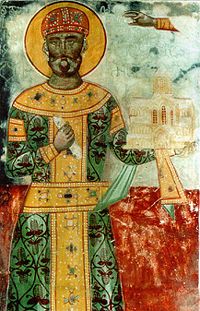|
Medieval Georgia was distinguished by the high level of
development in philosophy, historiography, poetics, arts
(especially handicraft and national architecture),
theology, law and legislation, astronomy, geography,
medicine, and other fields of science. This is confirmed
by the unique manuscripts of ancient Georgian and
foreign authors, by the rich cultural heritage of the
Georgian people.
As early as the first half of the
5th century, a magnificent monument of Georgian
literature "The Martyrdom of St.Shushanic" by Jacob
Tsurtaveli was created, and the genuine peak of
development of Medieval public thought is represented by
the epic poem "The Knight in the Panther's Skin" by
Shota Rustaveli. The latter is a convincing proof of
many-sided and profound knowledge accumulated by that time in
Georgia in the sphere of humanities and natural
sciences.
The Georgian
Academy of Sciences, as an organized form of uniting
Georgian scientists, was established in February 1941.
The direct predecessors of the Academy, preparing
grounds for its establishment, were the Georgian branch
of the All-Union Academy of Sciences and the Tbilisi
State University, where a number of research
institutions and scientific centers were created in the
20-s and 30-s of the past century.
The first sixteen elected members
of the Georgian Academy of Sciences worked in two
Departments: the Department of Mathematics and Natural
Sciences, and the Department of Social Sciences.
|

King David
the Builder |